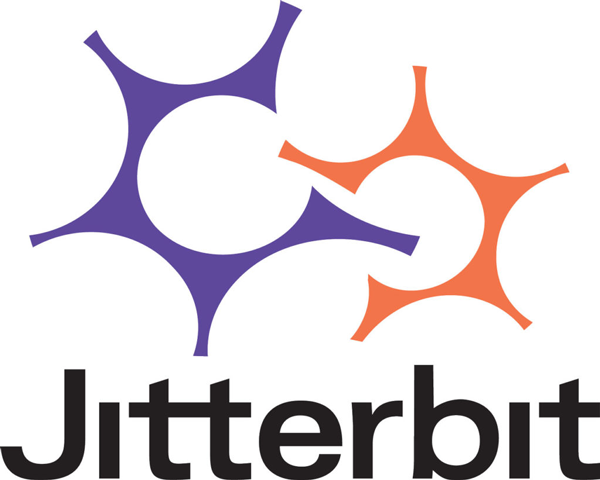Written by our clients
As we kick off another new year, both BOCA and our amazing clients start to look towards 2024 and what we might achieve in the coming year. With new innovations constantly changing the landscape of the tech industry, there’s no time like the present for our clients to think about how they can shape the future. Here’s what some of them have to say about what this new year might bring!
Apica
AI will continue to boom, and we will see adaptations in almost every area of our lives.
While AI will undoubtedly make our lives easier in many ways, we will see an uptick in error rates because this technology is only as smart as the language it’s been trained on. AI will inevitably replace more people and jobs, but the good news is that it will also create more jobs. In a few years, we will see many autonomous vehicles, essentially cell phones on wheels. The possibilities are virtually endless with AI, and we are only now starting to explore them.
Global catastrophes will continue to have an impact.
We will see more financial crises, and logistics and supply chains will continue to take hits. There will be less money to spend, and it will be important to consolidate the tools and resources we use. This is especially critical as data volumes will continue to soar. When you have overwhelming amounts of data and don’t know how to process it, costs rise, and time is lost. — The Apica Team
Vertical cloud and AI bot adoption will rise
In 2024 we will see vertical clouds continue to grow, a concept where cloud infrastructures specialize in specific industries or functions. Currently, cloud services like AWS, Google, and Azure mainly operate as general-purpose platforms, while SaaS applications cater to specific business needs. The transition from horizontal to vertical clouds is anticipated, where dedicated clouds for finance or agriculture, for instance, will offer highly specialized services. While we have seen industries starting to buy into vertical clouds, the evolution will be somewhat gradual; they won’t reach their prime in 2024, but they will enjoy significant growth when it comes to adoption. Google Cloud has developed cloud offerings that cater specifically to the healthcare and manufacturing industries, and I expect this trend to continue across cloud providers and additional industries.
AI bots are poised to take on countless tasks that are currently performed by users within the realm of low-code development. Right now, low-code platforms require users to learn specific tools that use drag-and-drop interfaces to accomplish tasks, such as building applications, creating and mapping integrations, and automating workflows. Yet, with the availability and growth of AI, there is a forthcoming shift towards greater simplification by incorporating AI bots. Going forward, this evolution will result in more companies adopting bots or leveraging AI to execute similar tasks such as constructing applications, managing integrations, and automating processes, but with a notable transition from the traditional low-code interfaces to Natural Language (NL) interfaces. In essence, technology is moving towards increased user-friendliness, enabling non-technical individuals to create automation using natural language. With this continuous evolution of AI-driven capabilities, adoption rates will rise, leading to improved ROI. — Manoj Chaudhary, CTO and SVP of engineering at Jitterbit
Prioritizing sustainability becomes standard practice
In 2023, sustainability emerged as a key business focus, a trend expected to accelerate in 2024. Corporations around the globe are now zeroing in on targets and regulations related to carbon emissions. Interviews with customers reveal a stark trend: manufacturers not providing Environmental, Social, and Governance (ESG) information in their proposals could face a revenue decline of up to 5%. On the flip side, those with ESG data might see revenue boosts up to 25%.
Looking ahead, manufacturers that embrace technology to streamline eco-friendly supply chains and production methods, along with corresponding ESG reporting, will be better positioned to fulfill consumer needs. They will also be able to demonstrate the environmental impact of their operations to their boards and investors. For manufacturers, routinely assessing and disclosing their environmental impact will become essential, not only to adhere to regulatory standards but also to assist their customers in making informed decisions with accessible carbon emissions data for customized products.
Manufacturers embrace customer-centricity
Manufacturing is changing rapidly with customers demanding a B2B buying journey that mirrors their daily purchases. Buyers of complex manufactured goods are no different than buyers who purchase consumer goods: whether they’re buying a semi-trailer truck or a pair of sneakers, they all want fast, easy, and accurate buying experiences.
As a result, manufacturers of highly configurable manufactured goods and services have started adopting various levels of technologies to help improve their customers’ buying journeys. Heading into 2023, 45% of manufacturers we surveyed said they wanted to improve the customer experience. As we round the corner into 2024, we’ve seen that number increase substantially as manufacturers across the globe are searching for ways to transform their operations to engage with customers when and where they want.
Advancements in visualization technologies and augmented reality have made it easier for B2B buyers to enjoy the same easy customization and one-click purchase journeys they’re accustomed to in the B2C realm. With the help of visual configurators, buyers can make informed decisions more quickly and easily, while sellers can effectively showcase their products and increase conversions. While making configuration adjustments, buyers can view real-time previews of how products will appear and perform. In addition, they can offer input on product availability, compatibility and costs, as well as ideas for promoting additional products.
Supply chain is integral in conjunction with the two points above. Once manufacturers can apply sustainability as standard practice and create a buying journey as close as the B2C, it is important to be able to meet the demand of the customers despite supply chain disruption. In recent years, the disruptive effects of supply chain disruption came to the forefront as the COVID-19 pandemic and other geopolitical disruptions threw fragile manufacturing supply chains into chaos. Respondents to one of our manufacturing surveys in 2023 stated that issues around supply chain predictability, resource scarcity and staff availability remained a top concern, driving 64% of respondents to invest in supply chains in 2023. Supply chain visibility will be equally if not more important in 2024. CPQ technology serves as the interface that makes granular and coordinated visibility possible; it helps manufacturers confidently implement robust supply chain strategies, and practice real-time monitoring to forecast bottlenecks and align supply chain data with configuration options. Ensuring timely delivery, and efficient resource usage will help manufacturers stay profitable, and flexible even with constant supply chain challenges. — Nils Olsson, Chief Product Officer + Chief Strategy Officer at Tacton
About BOCA Communications
BOCA Communications is an award-winning marketing communications and PR agency that caters to B2B tech and digital health innovators. From VC-backed startups to global, publicly traded companies, BOCA is proud of its client roster and long-standing partnerships. BOCA integrates inbound marketing and RevOps principles into its digital PR offerings, helping marketers reach their goal of driving business impact through brand awareness for customer conversion.
BOCA’s services are curated to deliver measurable results that build brands, drive profitability and ultimately grow our clients’ businesses.
Digital Marketing | MarCom | Public Relations | Technology PR | Tech PR | B2B Tech PR |Digital Health PR | Top Tech PR Agency | Content Marketing | Social Media | Media Relations | Analyst Relations | Awards and Speaking Programs | Analytics and Measurement




